The most common infection in the world, affecting almost 90% of people, is called HPV or human papillomavirus. After the discovery of papilloma, no one sounds the alarm, because it is considered a common wart in humans. Get rid of them only if they interfere or have a cosmetic defect. The disease is "human" and is transmitted only from the patient to a healthy person: in everyday life, through touch, through the reproductive system, during childbirth. The disease can manifest itself in the form of warts, papillomas or condylomata on the skin or mucous membranes. Let's understand what HPV is and how dangerous it is for people.
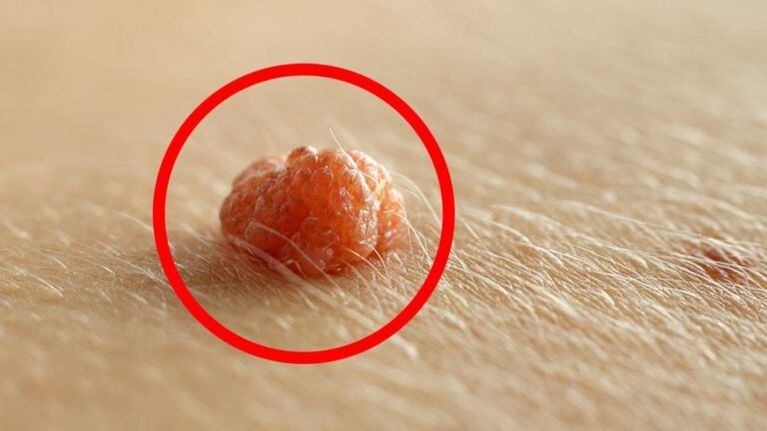
What is HPV?
The virus lives in almost everyone. HPV germs are so small that they can enter the bloodstream through abrasions, scratches and small cuts on the skin. The carrier may not show itself in any way during its lifetime, or it may always show itself in all its glory. The incubation period can range from a few weeks to several years. The signal for action is a weakening of the immune system. If papillomas appear on the skin and mucous membranes, then the body needs urgent treatment.
There are more than 70 types of human papillomavirus, but several new strains are reported each year. Conventionally, all types of HPV infection can be divided into two groups.
Warts are viruses that cause warts to develop in the body.
- HPV types 1, 2, 3, 4 cause plantar warts or corns;
- HPV types 3, 10, 28, 49 are responsible for the appearance of straight warts;
- HPV type 27 forms "butcher warts";
- HPV: 5, 7, 10, 12, 14, 15, 17, 19-24, 26, 27, 29, 57 - also develops warts.
Papillomas - viruses that cause papillomas and warts.
- HPV 6. 11, 13, 16, 18, 31, 33, 31, 33, 58, 52, 39, 70, 30, 40, 42, 43, 51, 55, 57, 59, 61, 62, 669,
What is the risk of HPV?
Why have doctors been sounding the alarm in the last few years trying to educate the public about HPV? Because the percentage of cancer patients infected with this virus is increasing significantly. Not only women with uterine cancer, but also men with male genital oncology suffer. The number of skin cancers among the elderly is also increasing.
Of course, there are types of HPV that do not affect a person's internal health, but their manifestations in the form of enlarged papillomas and warts are worrying. They are classified as low oncogenicity - minimal risk for the development of cancer. Such formations are easily removed by folk methods or aesthetic medicine. But the virus itself is not treated by any means and drugs. If a person is infected, then he is a lifelong carrier of the virus.
Other subtypes of papillomavirus infection belong to the group with high oncogenicity, ie they can affect the formation of malignant neoplasms in the body.
There are 3 types of its oncogenicity:
- Low cancer risk HPV: 6, 11, 40, 42, 43, 44, 54, 61, 70;
- Moderate oncological risk HPV: 26, 31, 33, 35, 51, 52, 53, 58, 66;
- High-risk HPV: 16, 18, 36, 39, 45, 56, 59, 66, 68.
Diseases and types of HPV
Below is a list of papilloma virus types.
Skin lesions:
- Warts under the feet (corns) 1, 2, 4
- General warts 2, 4, 26, 27, 29, 57
- Flat warts 3, 10, 28, 49
- Warts butcher 7
- Verusiform epidermodysplasia 2, 3, 5, 8, 9, 10, 12, 14, 15, 17, 19, 20-25, 36, 37, 46, 47, 50
Damage to the mucous membranes of the genitals:
- Genital warts 6, 11, 42-44, 54
- Non-invasive epithelial lesions (intraepithelial lesions) may precede cancer 62, 64, 67-70
- Cancer of the cervix, vulva, vagina, anus and genitals 16, 18, 31, 33, 35, 39, 45, 51, 52, 54, 56, 66, 68
Damage to non-genital mucous membranes:
- Damage to the mucous membrane of the oral cavity (hyperplasia of the focal epithelium) 13, 32
- Recurrent papillomatosis of the respiratory tract 6, 11, 30
- Malignant tumors of the head, neck, lungs 2, 6, 11, 16, 18, 30
Types of viral skin lesions
Most types of human papillomavirus infection are asymptomatic. External manifestations of the disease are different, here are some types:
common warts
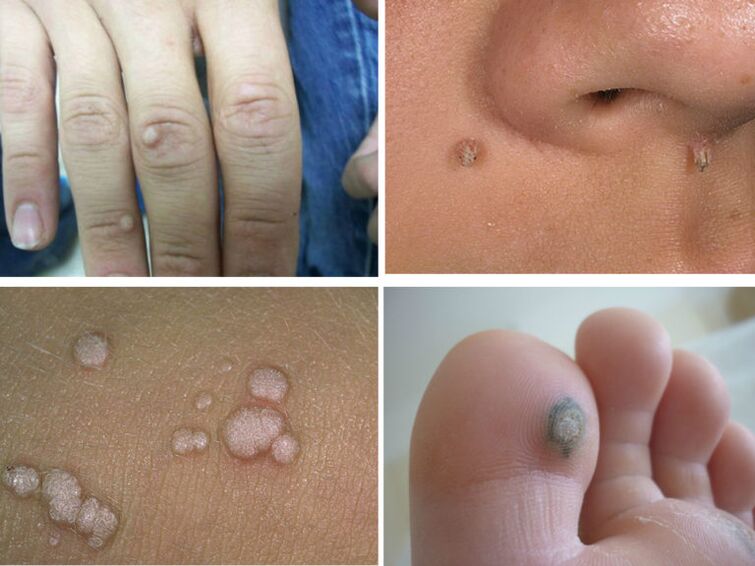
The most common form of HPV is wart. Almost every person can find a similar papule on the body with a diameter of no more than 5-7 mm. Warts are usually located on the edge of the palm, between the toes, under the feet, on the chin, eyelids and scalp. Warts can grow in size and can also form colonies from the mother's papule. Then they can cause discomfort: itching and tingling in the growing areas.
The most "sick" are plantar warts, their common name is "thorn". As they walk, they put pressure on the nerve endings, which causes severe pain. Surgical removal of such growths is recommended in clinics. Simple warts do not pose a threat to human health, they almost do not turn into oncological tumors.
Butcher warts
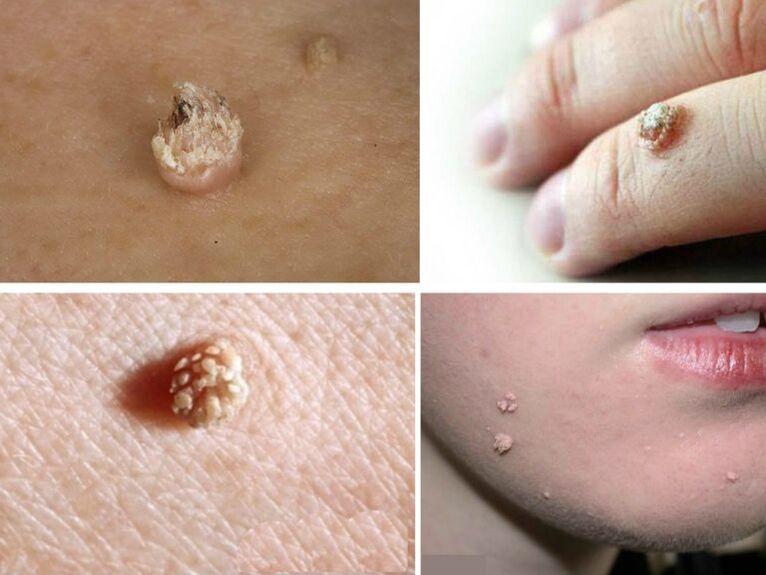
Butcher's warts resemble numerous thick filaments that grow from a single growth. It most often occurs on the fingers, especially in incisions. Long filiform papules are a concern for the owner, because these formations do not look aesthetically pleasing. They can bleed when hit or scratched. Although such warts are safe in the oncological sense, their damage will be a problem. The advice of doctors is to eliminate it without missing it.
straight warts

Flat warts are also called "warts in adolescence" because they are often seen during adolescence. They look like a large group of dry rashes on the skin. Cover forehead, cheeks, chin, arms. The color may not be different from the skin or may be slightly darker.
Butcher warts
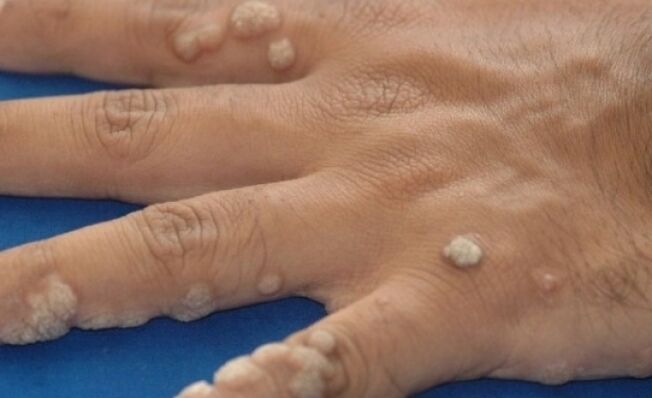
Butcher's warts are scars of normal skin color. They can be single or in groups of several pieces. These wart growths are named after the professional activities of butchers. We can say that this type of infection is an occupational disease of the meat industry.
Verrusiform epidermodysplasia

This disease can be confused with pityriasis versicolor, so you should consult a specialist. It is inherited, but is very rare in the form of dermatosis. Externally, it resembles the accumulation of flat scaly rashes and age spots. The main localization areas are the face, neck and hands. Unfortunately, this form of wart disease can turn into cancer.
Periungual warts
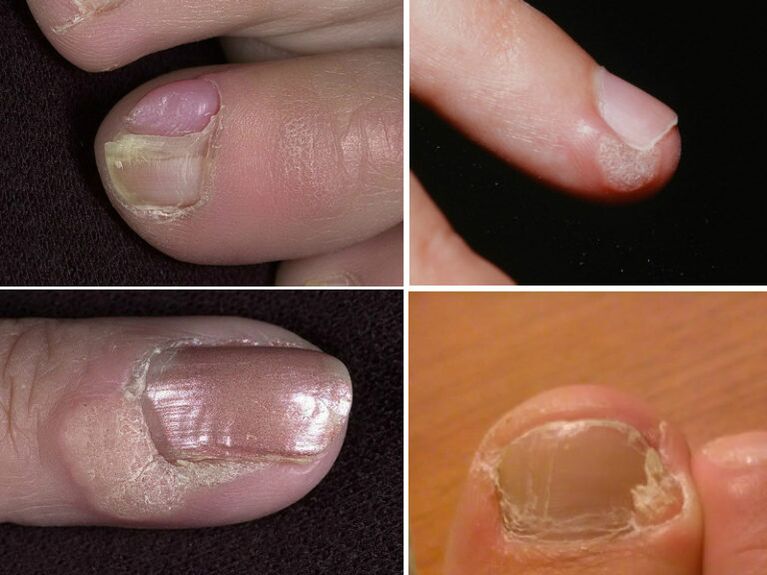
Warts near the nail destroy the nail plate. They grow deep in the skin and deform the finger. They do not turn into malignant formations, but this does not make them less undesirable. Surgery is needed for both aesthetic reasons and for the health of the fingers.
Bowen's disease
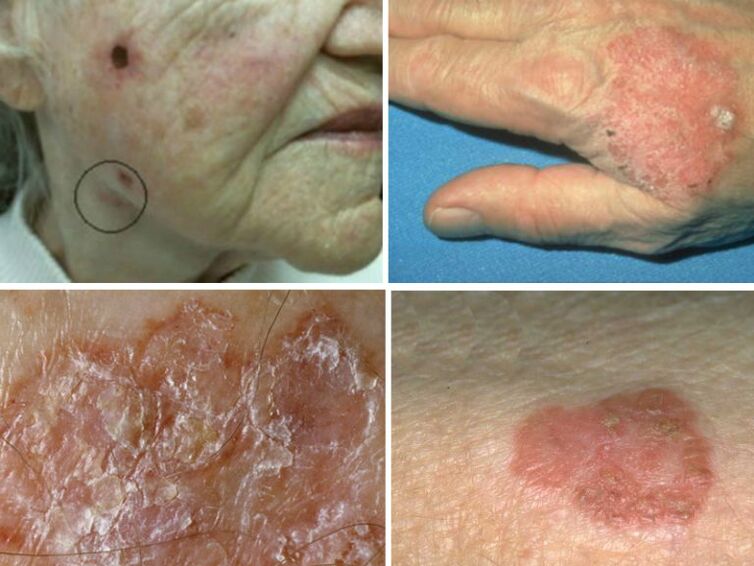
This form of HPV tends to develop into squamous cell carcinoma. When the skin is damaged, a 5 mm redness develops, grows and is covered with crusts. The upper layer of the epidermis is affected, the growth can be up to 5 cm in diameter. It is more common in the elderly due to weakened immune defenses.
Genital warts
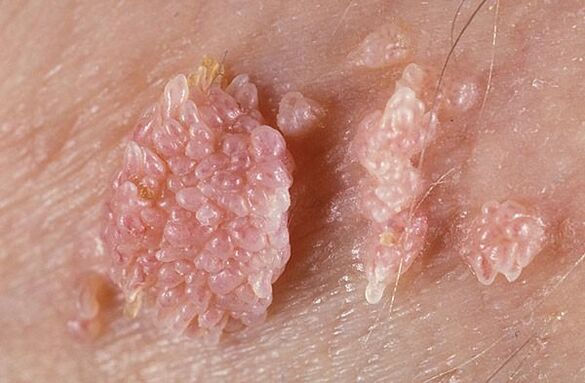
This type of HPV is sexually transmitted and therefore affects the genitals of men and women, as well as the mucous membranes of the urinary system and anus. The formations look like cauliflower or a rooster. Genital warts can also appear in the corners of the mouth due to oral sex. Growths should be removed, as friction can damage them and cause infection.
Papillomas in the oropharynx

HPV infection in the mouth is similar to cauliflower. White plaques can descend into the lungs and trachea, making it difficult for a person to breathe. Eating can damage the papilloma, which in turn can lead to cancer. Because it is not possible to distinguish a malignant tumor from a benign one, tests should be performed before removing the plaques.
Flowering papillomatosis can not be only in the elderly. The disease occurs in children and adults. The main symptoms of laryngeal papillomatosis are dysphonia (speech disorder) and aphonia (inability to speak), hoarseness and difficulty breathing.
Methods of treatment
Methods to get rid of papillomavirus infection are not available today. Therefore, treatment is reduced to the elimination of external formations and the burial of the virus in the patient's body. Some viruses die spontaneously over several years. Which methods and preparations to use for treatment is determined by the doctor only on the basis of diagnosis, tests and external examination of the patient.
Destructive methods:
- surgical removal of the wart / papilloma (used only when a malignant lesion is suspected);
- electrocoagulation - cauterization of a layer with a coagulator through which an electric current passes;
- cryodestruction - destruction of warts with liquid nitrogen;
- laser treatment - effect on the formation of the laser beam;
- radio wave method - exposure to warts / papillomas using a surgitron device.
Chemotherapy:
- catering with salicylic acid;
- processing education trichloroacetic acid 50-90% concentration;
- mixture of acids - treatment with educational drug (efficiency is very low).
Antiviral and immunomodulatory drugs should be included in therapy to activate the immune system and suppress HPV.
Disease prevention
It is very difficult not to be infected with the HPV virus, as it can be transmitted in the bathroom, in the pool, in the hospital, using ordinary household items. But these strains are mild and do not cause cancer. Prevention usually involves personal hygiene, prompt treatment of cuts and injuries with antibacterial agents, and the use of protective equipment at work.
Particular attention should be paid to the prevention of sexually transmitted viruses. Protecting your body with a condom is unlikely to succeed. In a partner, the viral infection can be located near the genitals and in the mouth. The best way to prevent infection is to get vaccinated beforehand. Vaccinations should be given to girls and boys between the ages of 11 and 13 before sexual activity. Immunity lasts from 3-5 years to 10 years, depending on the vaccine and the type of virus. Then, if there is a risk of infection (change of sexual partners), the vaccine can be repeated.
High-risk oncogenic HPV can actually cause tissue changes and lead to an oncological process. However, several years pass between the first signs of cancer and its development. Therefore, it is very important for women in particular to have an annual medical examination with a doctor. Regular gynecological examination reveals changes in both the external genitalia and the cervix. Take care of your health!























